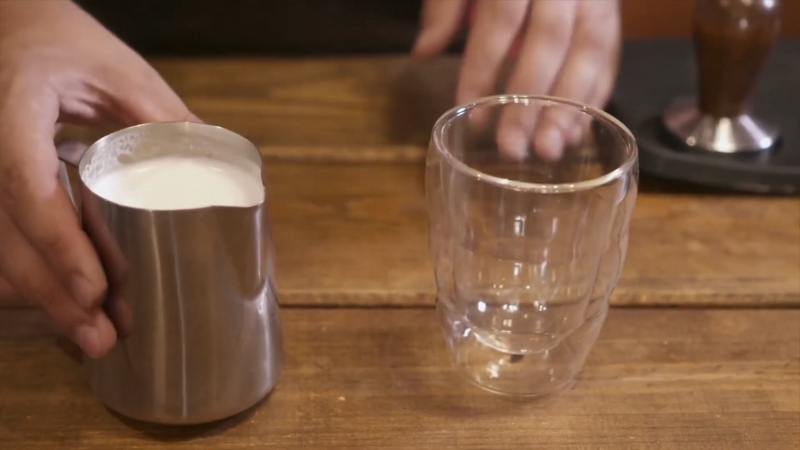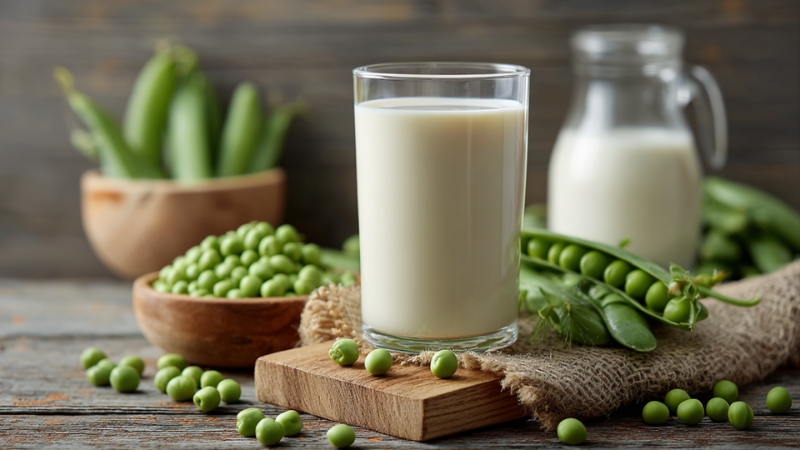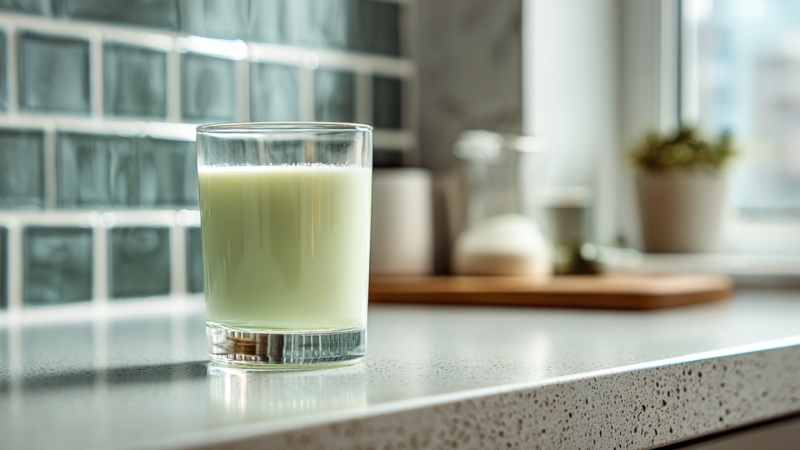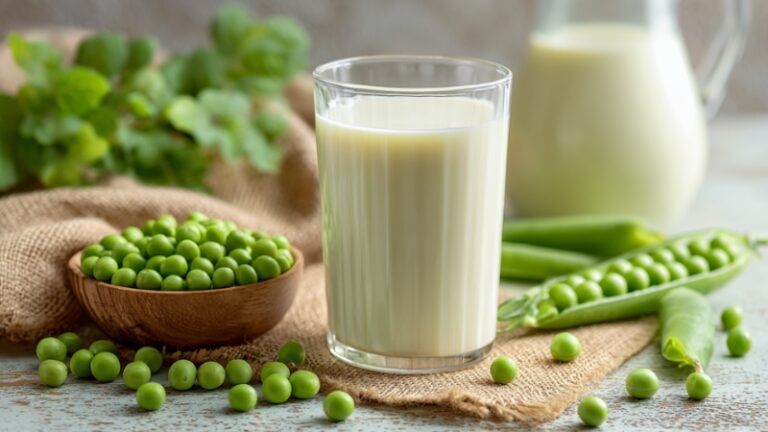When I first heard about pea milk, I rolled my eyes. The idea of drinking something made from yellow peas sounded like a wellness gimmick that would fade as soon as people remembered regular milk exists.
But a few years later, I’m still pouring it into my coffee every morning, and I’m not alone. Pea milk has gone from niche vegan curiosity to a steady item in major grocery stores, sitting right next to oat, soy, and almond milk.
I didn’t switch for ethical reasons or to follow a trend. It started because dairy made me feel heavy and bloated, and almond milk wasn’t cutting it, too watery, not enough protein, and environmentally questionable in how it’s produced.
Pea milk seemed like a middle ground: high in protein, smooth in texture, and better for the planet. After drinking it regularly for more than a year, I’ve learned what it really offers, and what it doesn’t.
What Pea Milk Actually Is
Pea milk is made from yellow split peas, not the green ones you find in soups. The peas are milled into flour, the protein is isolated, and then blended with water, oil (often sunflower or canola), and minerals like calcium and potassium.
Most brands, like Ripple or Sproud, fortify it with vitamin D, B12, and omega-3s to make it nutritionally comparable or even superior to cow’s milk.
The result? A white, creamy beverage that doesn’t taste like peas at all. The flavor is mild and neutral, which is why it works surprisingly well in coffee, cereal, and cooking.
The Pro: What Makes Pea Milk Worth Trying

1. It’s Actually High in Protein
One of the biggest selling points of pea milk is its protein content. Unlike almond or oat milk, which offer around 1–2 grams of protein per cup, pea milk gives you 8 grams, the same as cow’s milk.
That’s a big deal if you use plant-based milks but still want to hit your daily protein targets. It pairs well with simple whole-food snacks like Larabars, which often rely on nuts and dates for quick energy without additives.
Milk Type
Protein (per 240 ml)
Cow’s milk
8 g
Pea milk
8 g
Soy milk
7 g
Oat milk
2 g
Almond milk
1 g
As someone who lifts a few days a week, this matters more than I’d like to admit. Pea milk blends easily into shakes and oatmeal, giving a satisfying, fuller feel without extra sugar or filler carbs.
2. It Froths and Mixes Like Real Milk
View this post on Instagram
If you’ve ever tried making a latte with almond milk, you know the foam collapses before you even take a sip. Pea milk, on the other hand, behaves much closer to dairy. It froths thick, stays stable, and even browns nicely in baking.
I often use it for pancakes, mashed potatoes, and even creamy pasta sauces. Unlike soy milk, it doesn’t separate under heat. That makes it one of the few plant milks that actually cooks like cow’s milk.
3. Lower Environmental Impact
While no plant milk is impact-free, pea milk performs impressively well. Yellow peas require far less water than almonds and release fewer greenhouse gases than dairy cows.
They also help replenish nitrogen in the soil, making them a sustainable crop for farmers.
Type
Water Use (liters per liter of milk)
CO₂ Emissions (kg per liter)
Cow’s milk
~1,000
3.2
Almond milk
~370
0.7
Oat milk
~48
0.9
Pea milk
~10
0.6
For me, that means less guilt about my daily habits. It’s a small sustainability win that doesn’t feel like a compromise.
4. Allergen-Friendly and Easy on the Stomach
Pea milk is naturally lactose-free, nut-free, soy-free, and gluten-free. That combination covers a surprising number of people who can’t tolerate traditional or even alternative milks.
I found it especially helpful during times when my digestion felt off; pea milk never gave me that bloated feeling that dairy or soy sometimes does.
And unlike oat milk, it doesn’t spike my blood sugar, which makes it more suitable for anyone watching carbohydrate intake.
5. It’s Creamy and Neutral, Not Sweet
This might sound trivial, but it’s the main reason I stuck with it. Pea milk tastes normal. It doesn’t have the cereal-like flavor of oat milk or the nutty aftertaste of almond milk.
When you pour it into coffee, it simply disappears into the background, doing its job quietly, like milk should.
For cooking and baking, that neutrality makes it versatile. It won’t clash with savory dishes or make sauces weirdly sweet.
The CCNS: What You Should Know Before Switching

1. It’s More Processed Than It Looks
Pea milk isn’t just ground peas and water; it’s a highly processed product. To make it smooth and stable, manufacturers extract the protein from peas, then blend it with various oils, gums, and stabilizers.
While that’s not necessarily unhealthy, it does mean pea milk is far removed from its original food source. If you prefer simple, minimally processed products, pea milk might feel a bit too engineered.
2. Not All Brands Taste the Same
The first time I tried pea milk, it was awful. The texture was chalky, and it left a weird aftertaste. It took trying a few brands (Ripple, Sproud, and a local store brand) before I found one I liked.
Brand
Taste
Texture
Best Use
Ripple Original
Mild, neutral
Thick, creamy
Coffee, cereal
Sproud Barista
Slightly nutty
Froths well
Lattes, baking
Silk Nextmilk (Pea Blend)
Sweet, light
Very smooth
Kids, general drinking
3. It’s Still Expensive

At about $4–$6 per liter, pea milk costs nearly double the price of cow’s milk and more than most other plant-based options. For daily use, especially if your household goes through several cartons a week, it adds up quickly.
Unless you value the protein content or sustainability benefits, that cost might not justify the switch.
4. Limited Availability in Smaller Stores
Big city supermarkets stock it easily, but in smaller towns or convenience shops, you’ll rarely find pea milk. Even when available, it might come in only one or two brands, sometimes long past the “best by” date.
If consistency matters to you, that’s a practical downside. I often have to order it online in bulk to make sure I don’t run out.
5. The Texture Isn’t for Everyone
Though creamy, pea milk can feel slightly dense compared to oat or almond milk. Some people describe it as “chalky” or “powdery,” especially if it’s not well shaken. It’s not a deal-breaker, but it takes getting used to.
I’ve found that it performs best when chilled or frothed; straight from the carton, it can feel heavier than expected.
How It Fits Into Everyday Use
@orlandotravelfoodies Folona’s Pea Milk is a non-dairy plant milk powder that tastes better than all its vegan milk rivals. It is also a healthier alternative to conventional dairy coffee creamer. The high protein content makes it ideal for cooking or baking. One serving of Folona Pea Milk provides 7.2 g of protein, which is 90% of protein as cow milk, twice as much protein as coconut milk and cashew milk, almost 3 times more protein than oat milk and 7 times more protein than almond milk. @folonanutrition #peamilk #nondairy #nondairymilk #milkalternative #milkreplacer #milkalternatives #healthyliving #milkshake #coffee ♬ Milkshake – Kelis
After a year of using it, pea milk has become my go-to. I use it for coffee, overnight oats, smoothies, and sauces. I don’t think of it as a “milk alternative” anymore, just as the milk I buy.
It’s not perfect. It’s more expensive, harder to find, and more processed than I’d like. But for taste, nutrition, and digestibility, it wins for me. Every time I run out and substitute almond milk, I remember exactly why I switched.
Final Verdict
The real-world summary:
Category
Pea Milk Verdict
Taste
Neutral, mild, not sweet
Nutrition
Excellent protein, good fortification
Digestibility
Light, easy on the stomach
Sustainability
Low-impact crop
Cost
High
Texture
Creamy, but heavier than oat milk
Availability
Growing, but still limited regionally
Pea milk isn’t the next big miracle food. It’s just a genuinely practical, well-rounded alternative for people who want plant-based milk that feels substantial and balanced.
If you care about protein, sustainability, and smooth coffee foam, and can stomach the higher price, it’s probably worth a try.

